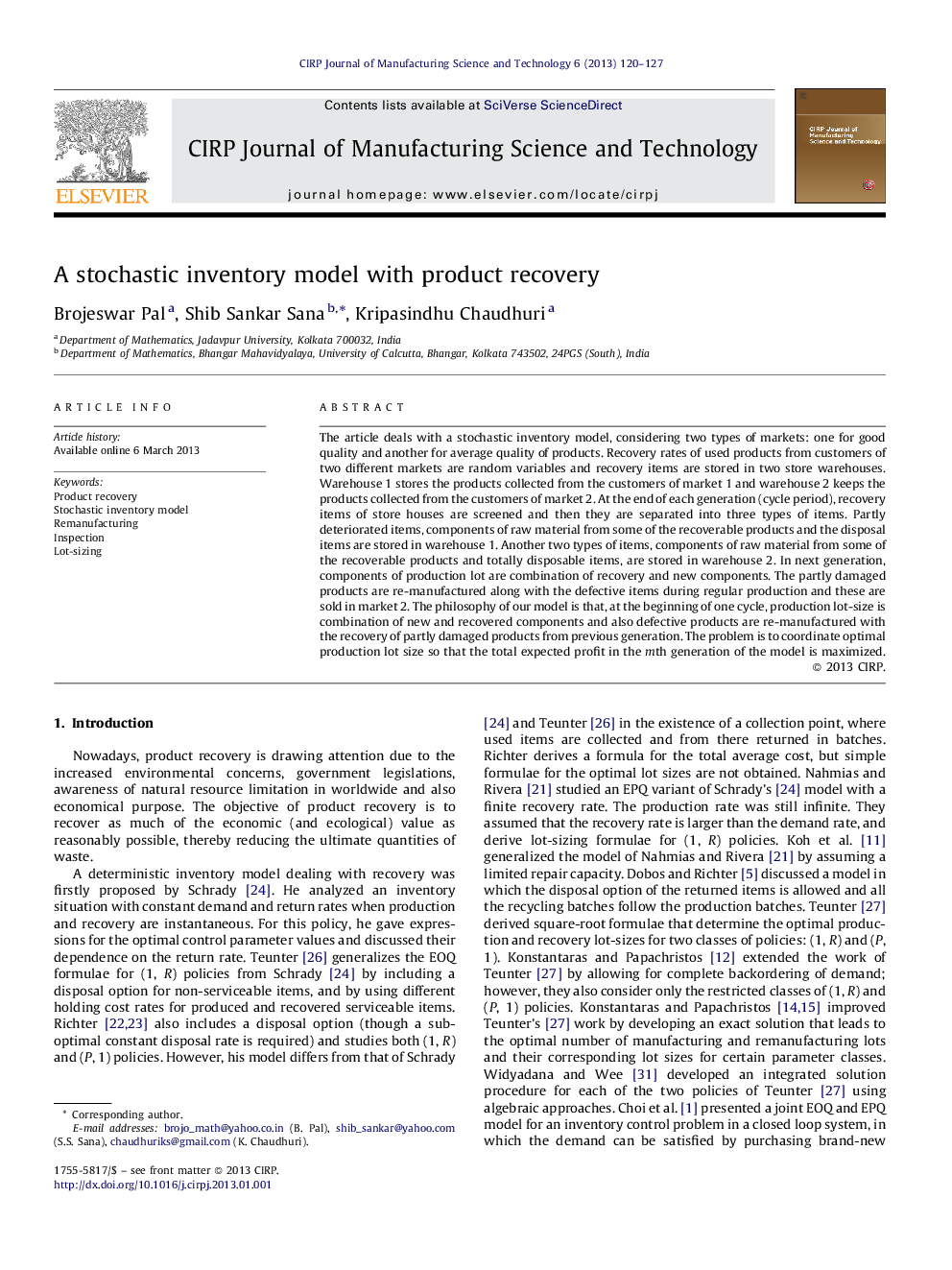| کد مقاله | کد نشریه | سال انتشار | مقاله انگلیسی | نسخه تمام متن |
|---|---|---|---|---|
| 1679838 | 1518434 | 2013 | 8 صفحه PDF | دانلود رایگان |

The article deals with a stochastic inventory model, considering two types of markets: one for good quality and another for average quality of products. Recovery rates of used products from customers of two different markets are random variables and recovery items are stored in two store warehouses. Warehouse 1 stores the products collected from the customers of market 1 and warehouse 2 keeps the products collected from the customers of market 2. At the end of each generation (cycle period), recovery items of store houses are screened and then they are separated into three types of items. Partly deteriorated items, components of raw material from some of the recoverable products and the disposal items are stored in warehouse 1. Another two types of items, components of raw material from some of the recoverable products and totally disposable items, are stored in warehouse 2. In next generation, components of production lot are combination of recovery and new components. The partly damaged products are re-manufactured along with the defective items during regular production and these are sold in market 2. The philosophy of our model is that, at the beginning of one cycle, production lot-size is combination of new and recovered components and also defective products are re-manufactured with the recovery of partly damaged products from previous generation. The problem is to coordinate optimal production lot size so that the total expected profit in the mth generation of the model is maximized.
► Product recovery is considered for stochastic inventory model.
► Remanufacturing process is adopted.
► Inspection policy is incorporated for lot-sizing.
Journal: CIRP Journal of Manufacturing Science and Technology - Volume 6, Issue 2, 2013, Pages 120–127